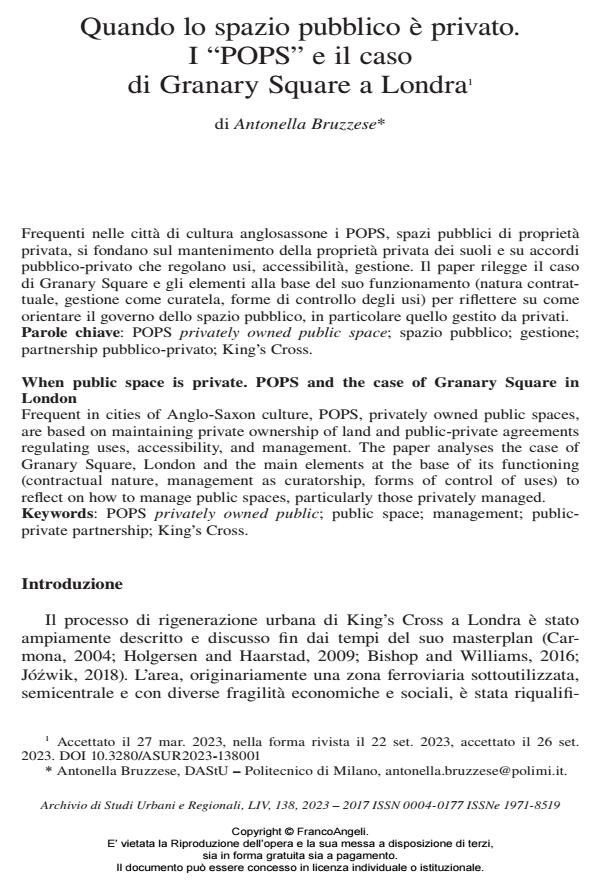Quando lo spazio pubblico è privato. I "POPS" e il caso di Granary Square a Londra
Titolo Rivista ARCHIVIO DI STUDI URBANI E REGIONALI
Autori/Curatori Antonella Bruzzese
Anno di pubblicazione 2024 Fascicolo 2023/138
Lingua Italiano Numero pagine 24 P. 5-28 Dimensione file 164 KB
DOI 10.3280/ASUR2023-138001
Il DOI è il codice a barre della proprietà intellettuale: per saperne di più
clicca qui
Qui sotto puoi vedere in anteprima la prima pagina di questo articolo.
Se questo articolo ti interessa, lo puoi acquistare (e scaricare in formato pdf) seguendo le facili indicazioni per acquistare il download credit. Acquista Download Credits per scaricare questo Articolo in formato PDF

FrancoAngeli è membro della Publishers International Linking Association, Inc (PILA)associazione indipendente e non profit per facilitare (attraverso i servizi tecnologici implementati da CrossRef.org) l’accesso degli studiosi ai contenuti digitali nelle pubblicazioni professionali e scientifiche
Frequenti nelle città di cultura anglosassone i POPS, spazi pubblici di proprietà privata, si fondano sul mantenimento della proprietà privata dei suoli e su accordi pubblico-privato che regolano usi, accessibilità, gestione. Il paper rilegge il caso di Granary Square e gli elementi alla base del suo funzionamento (natura contrattuale, gestione come curatela, forme di controllo degli usi) per riflettere su come orientare il governo dello spazio pubblico, in particolare quello gestito da privati.
Parole chiave:POPS privately owned public space; spazio pubblico; gestione; partnership pubblico-privato; King’s Cross.
Antonella Bruzzese, Quando lo spazio pubblico è privato. I "POPS" e il caso di Granary Square a Londra in "ARCHIVIO DI STUDI URBANI E REGIONALI" 138/2023, pp 5-28, DOI: 10.3280/ASUR2023-138001